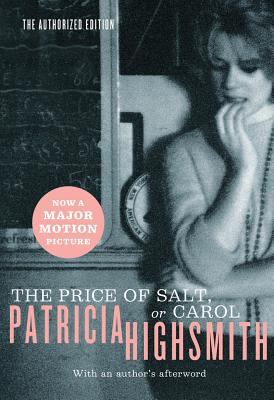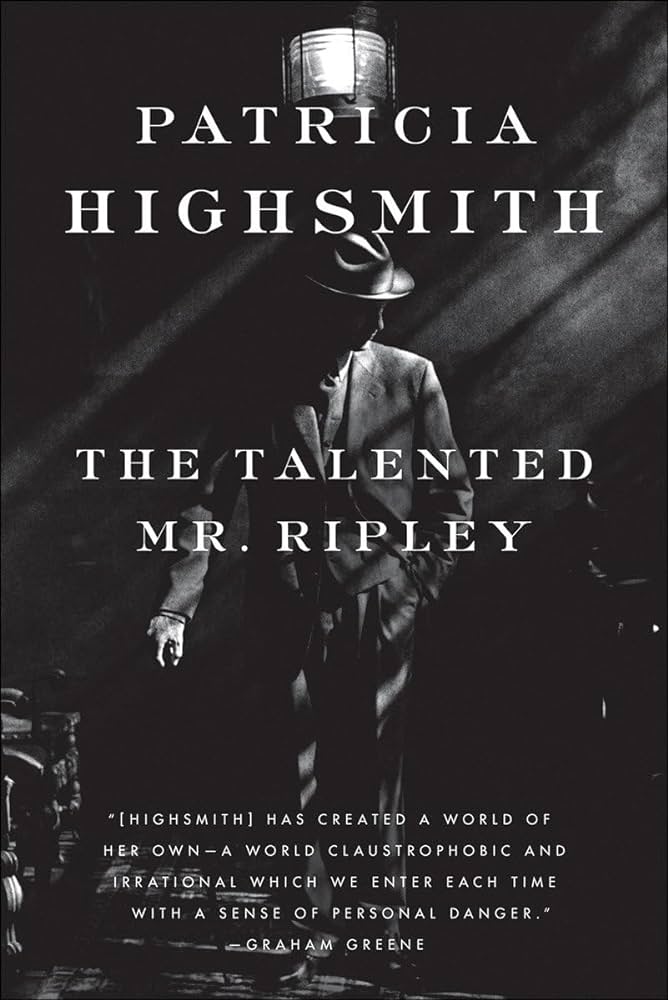Patricia Highsmith’s second novel, biographer Joan Schenkar writes, “was so marked by her secret obsessions that writing it felt like a birthing. ‘Oh god,’ [Highsmith] enthused, ‘how this story emerges from my own bones!'”
72 years following its publication, “The Price of Salt” has long been regarded as a groundbreaking novel in lesbian literary history. Every review I read noted  its departure from the tropes of the times — how neither woman is ultimately forced into heterosexuality, nor suffers a tragic death (both true, though I hesitate to call the ending a happy one). All that to say, I was excited to read this book, and I’m glad I did. I’ll start with the good…
its departure from the tropes of the times — how neither woman is ultimately forced into heterosexuality, nor suffers a tragic death (both true, though I hesitate to call the ending a happy one). All that to say, I was excited to read this book, and I’m glad I did. I’ll start with the good…
Therese Belivet is an endearing protagonist. We meet her in the employee cafeteria at Frankenberg’s, the New York City department store where she has just begun a dreadful job behind the toy counter at the height of the Christmas season. She is 19 years old with a passion for set designing and a fed-up-ness with… most things. Needless to say, she would rather be somewhere else:
“The store intensified things that had always bothered her, as long as she could remember. It was the pointless actions, the meaningless chores…the sense that everyone was incommunicado with everyone else and living on an entirely wrong plane, so that the meaning, the message, the love, or whatever it was that each life contained, never could find its expression.”
It was these last few clauses that committed me to the book. I realized I was reading a protagonist who was concerned with what life contained, and getting access to it. This preoccupation with life’s contents, I thought, would take Therese on an interesting, probably painful journey. So when Carol Aird arrived at the toy counter asking for help in all her mysterious, disarming glory, I felt almost fearful for Therese. It seemed clear even in those first moments that our young protagonist would follow this captivating woman to the ends of the earth, if she thought it would get her closer to the meaning, the message, the love…
 I may be giving you the wrong idea about Therese as a headstrong, insatiable woman. The truth is, there’s a lot holding her back. She struggles under a depressing passivity at times, especially in her relationship with Richard, a man she is dating and doesn’t love, yet in whose orbit she miserably remains. While she dreams of being a set designer, it’s hard not to wish she would show a little more urgency. And when it comes to Carol, Therese’s single-minded pursuit of the older woman quickly becomes something else — a surrender, maybe.
I may be giving you the wrong idea about Therese as a headstrong, insatiable woman. The truth is, there’s a lot holding her back. She struggles under a depressing passivity at times, especially in her relationship with Richard, a man she is dating and doesn’t love, yet in whose orbit she miserably remains. While she dreams of being a set designer, it’s hard not to wish she would show a little more urgency. And when it comes to Carol, Therese’s single-minded pursuit of the older woman quickly becomes something else — a surrender, maybe.
I guess I should say a few words about Carol, the namesake of the fourth edition (released under a new title, and also a new author — the real one, Patricia Highsmith, instead of the pseudonym Claire Morgan. Also, the name of the 2015 movie adaptation). She’s beautiful and wealthy, and separated from her husband (divorce pending). She has a daughter. She reciprocates Therese’s interest, or rather, she accepts it, alchemizes it into something stronger and stranger, and returns it to the younger woman sparingly in precious, vicious doses.
(SUBTEXT: While Therese couldn’t get enough of Carol, I was not nearly so enchanted.)
If the power dynamic sounds imbalanced, that’s because it is — dangerously so. But I’ll let you uncover the particulars on your own time. I’d rather spend the rest of my word count on a third personality, the most confounding one of all: Patricia Highsmith herself, who died at age 74 in February 1995, closing a legendary career and a richly, recklessly lived life.
“Obsessions,” Highsmith wrote, “are the only things that matter.”
Indeed, Highsmith could never resist playing out her own obsessions in her novels. Critics commonly note how her proxies can be identified in her works: Mr. Ripley, the con man who stars in “The Talented Mr. Ripley,” for instance, and our very own Therese, whose first encounter with Carol is directly inspired by Highsmith’s own experience behind a Bloomingdale’s counter in 1948 when a blonde woman in a mink coat sought help buying a Christmas present. The two would never meet again, except for in Highsmith’s fantasies, which would find a life and darkness of their own on the page.
Highsmith’s life was marked by such infatuations, though it feels wrong to call her a romantic (There must be a better word for someone who mused in a diary that “murder is a kind of making love, a kind of possessing.”). And her art was marked by such personal inspirations, though it feels wrong to call her a confessional writer, because any self-disclosures were shrouded in some disguise (or multiple disguises, as in “The Price of Salt” — both a pseudonymous and eponymous work. It was only with the greatest reluctance that Highsmith allowed its republication under her own name, 38 years after the original release).
 If you have the time and twisted interest in learning more about Patricia Highsmith, I recommend “The Talented Miss Highsmith: The Secret Life and Serious Art of Patricia Highsmith” by the late Joan Schenkar. And if you’re not motivated to pick up a 684-page biography, well, any of Highsmith’s stories will do. Everything she wrote contains traces of her soul.
If you have the time and twisted interest in learning more about Patricia Highsmith, I recommend “The Talented Miss Highsmith: The Secret Life and Serious Art of Patricia Highsmith” by the late Joan Schenkar. And if you’re not motivated to pick up a 684-page biography, well, any of Highsmith’s stories will do. Everything she wrote contains traces of her soul.
She was known for writing mysteries, and still, the greatest mystery was the writer herself (such that a new biography, promising to reveal what has never been revealed before, has been written about Highsmith every decade since her death), each of her novels a fingerprint, a clue. “The Price of Salt” is as good a place as any to start investigating.
Thanks for reading! Until next month’s obsession,
Karena


